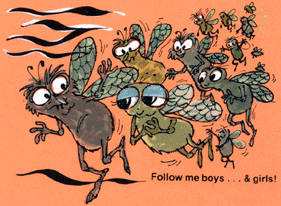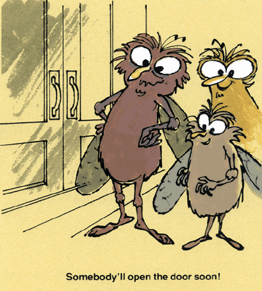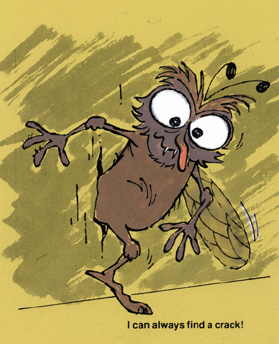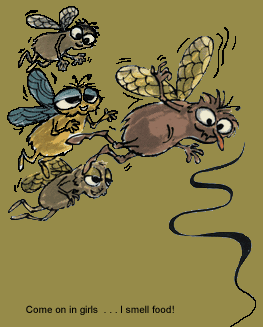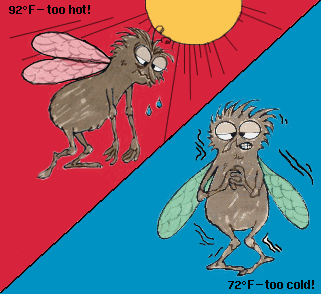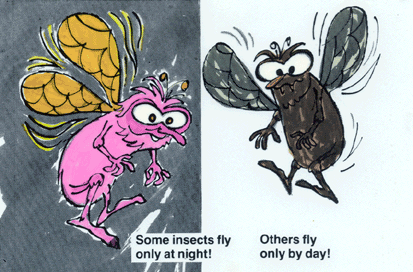
| Just when you think you've classified insects into every imaginable category, you find there's still another characteristic that distinguished it from others. And, so it is with the flyers. You see, some fly only at night and some fly only during the day. The technical term for the night flyers is nocturnal, while the day flyers are called
diurnal.
Confining our thoughts to industrial plants, there are one or two differences that set the night flyers apart from the day flyers. The nocturnal are concentrated by ultraviolet energy, while those that fly in the day are brought together primarily by food and water. These facts, though briefly stated, provide us the basic elements to begin our system of insect control. First, the night flyers, since they're drawn to ultraviolet energy, will naturally congregate around entrances into the plant...employee entrances, loading docks, office entries: anywhere, in fact, where there is need for light. Naturally, a few thousand enter the plant as doors are opened and closed. The day flyers, as already noted, seek out refuse areas around the plant which are almost always next to the loading dock. With the big bay doors opening and closing all day long, the day flyers find little difficulty getting inside. With so much known about the flyers-their sensitivity to heat and light (energy), their instinct to propagate, plus the need for food and water,-add the effects of air currents, and it's not difficult to see how insect problems develop around plants. Let's take a case study.. | ||||
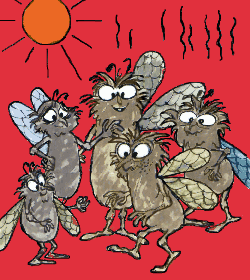
Insects concentrate in warm areas (82.4° F). | |||||
How insect problems develop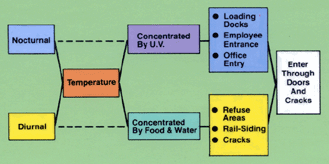
|
The Nocturnal Insect may be several miles from a plant. The sun goes down and the temperature falls. Being cold blooded, the Nocturnal Insect, with his finely tunes sensitivity to temperature, detects warmth on the wind. Like homing ptgeons, millions of insects start toward the source, which in this instance is an industrial plant with a large parking lot. After several hours of baking in the hot sun, the plant continues to radiate heat long after the cool of the evening chills the air. Unerringly, the Nocturnal Insect proceeds to the plant area.
In the general area of the plant, another stimulus takes effect. In the parking area, over doors and other entrances, and along the perimeter of the plant are mercury vapor lamps rich in the emissions of ultraviolet energy of these powerful lights, so they fly as close to the lamps as possible. In effect, all kinds of light will be attractive to insects. Now it doesn't take a lot of imagination to see how this creates a problem. Some of these concentrations take place around loading docks and plant entrances where the lights are, the Nocturnal Insect naturally enters the plant interior as the doors are opened. The insect doesn't require anything as big as a door to enter. Most plants have cracks, especially around doors and where walls join the roof and floor. They provide a convenient entrance for a portion of the millions of insects normally buzzing around the plant. Remember, there's heat coming from those cracks and the Nocturnal Insect, in the quest to find a warm place, is drawn to them like a magnet, and inside they go. It doesn't have to be a big crack because so many insects have the capacity to flatten their body to less than half its original size. |
